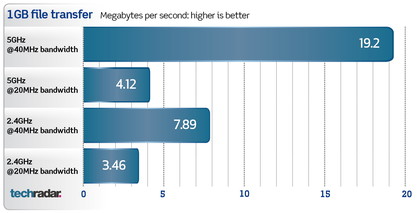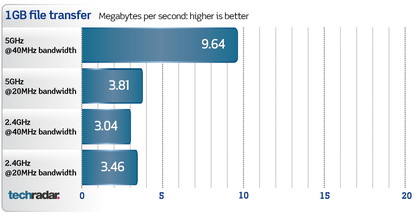TechRadar Verdict
A cracking, feature-rich router, but comes at a rather hefty price.
Pros
- +
Performance
- +
Feature set
- +
Ease of use
Cons
- -
Not cheap for a home router
Why you can trust TechRadar
The RT-N66U Dark Knight is Asus' first N900 router and is the feature-rich follow up to the highly popular and award-winning Asus RT-N56U.
This update comes with increased WiFi speeds of up to 450Mbps on both the 5GHz and 2.4GHz transmissions concurrently (hence the N900 name).
This makes it ideal for bandwidth hungry tasks like 3D HD video streaming and multiplayer gaming, while at the same time still enabling you to surf the web, download or share files.
It's also jam-packed with features such as a built in VPN server, a firewall that you can customise, QoS and IPv6 support. It also comes with two USB ports and, in common with most routers that are USB enabled, the ports can be used to support external storage or printers, turning the RT-N66U into a storage or print server.
It also supports up to six wireless networks, three over each band.
Sadly though it wont make you breakfast in the morning. It's almost like Asus isn't really trying...
Vital stats
Sign up for breaking news, reviews, opinion, top tech deals, and more.
WiFi frequency
- Dual-band 2.4GHz and 5GHz
Ports
- 4x Gigabit ethernet, 2x USB 2.0
Antenna
- 3x detachable
Dimensions
- 207 x 148.9 x 35.5mm
Benchmarks
We tested the wireless performance of the Asus RT-N66U at both its frequencies and at its highest (40MHz) and lowest bandwidth (20MHz) for each by transferring a very large, 3GB file from a notebook connected directly to the router to another notebook.
We tested a couple of scenarios, one in with the receiving notebook in the same room and another where the notebook was in the next room behind two standard width walls.
Same room transfer performance

Next room transfer performance

